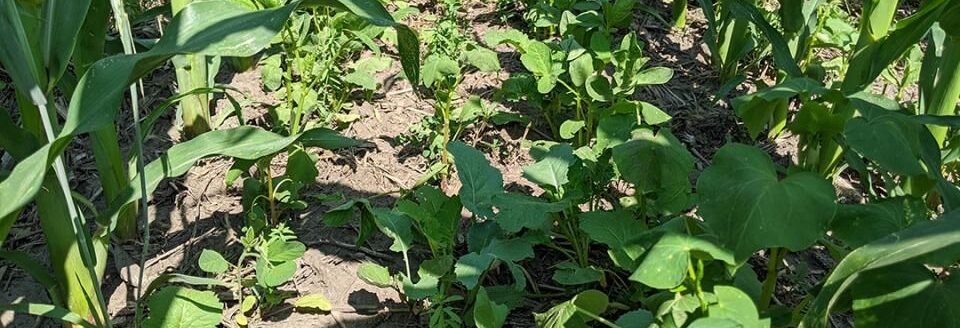Ask the expert: A no-till Q&A with Kent Vlieger
Kent Vlieger, the State Soil Health Specialist for the USDA Natural Resources Conservation Service in Huron, South Dakota, answers a few questions about the benefits of using a no-till and cover crop system to improve soil health and water quality while reducing erosion.
Kent provides conservation technical assistance to South Dakota farmers and ranchers who are looking for ways to improve soil health on their operations. He travels the Mount Rushmore state, providing soil health demonstrations and education at field days, meetings, and other events.
What is no-till farming?
The simple answer is planting crops without tilling the soil. While the definition is simple, no-till farming requires a different set of management skills than conventional tillage operations.
Increased residue on the surface may require different equipment or a different setup of existing equipment. For example, modifications to the residue/chaff spreader on the back of the combine may be needed to provide consistent residue distribution to the width of the header to aid planting the next crop.
No-till is an important piece of the Soil Health Principles:
-
Keep the soil covered;
-
Minimize disturbance;
-
Maximize diversity;
-
Keep a living root in the soil as long as possible; and
-
Integrate livestock.
What are cover crops?
If you would have asked me this 15+ years ago I would have given the easy answer, “anything planted after harvest of a commodity crop to cover the soil and prevent erosion.” Today, however, producers plant cover crops before, after and with their commodity crops, and do so for a myriad of reasons, including:
-
Erosion control;
-
Build soil organic matter levels;
-
Increase biological diversity;
-
Provide feed for livestock;
-
Build soil aggregates;
-
Reduce compaction;
-
Weed suppression;
-
Use excess soil moisture;
-
Residue cycling;
-
Build and make available plant nutrients;
-
Prevent nitrate leaching;
-
Wildlife habitat.
How do you use cover crops to convert to no-till?
Switching from conventional tillage to no-till can have some growing pains. The full package of no-till benefits including improved soil structure and aggregate stability, increased biological activity, and improved infiltration rate aren’t fully realized during the system transition process. Incorporating cover crops can speed this up by having a living root in the soil for a longer percentage of the year.
What are the best cover crops to use in a no-till system?
In my opinion, there’s no such thing as a “best” cover crop. It depends on where you live and your goals. With that being said, there are some species I regularly see used in northern plains mixtures:
-
Oats: inexpensive, germinate and grow quickly, good mycorrhizal association;
- Flax: mycorrhizal, low nutrient demand;
- Millet: several varieties with different uses;
- Cereal rye: winter annual, very hardy, grows fast in the spring, weed control;
- Annual ryegrass: tolerates shade and does well inter-seeded with corn, dense fibrous root system;
- Cowpeas: does well in heat and dry conditions, legume;
- Clovers: several species with different uses, legume;
- Buckwheat: fast growth, good pollinator, phosphorus scavenger; and
- Radishes: nitrogen scavengers, tolerate cold temperatures.
How do you add cover crops into a no-till system?
Before adding cover crops into a no-till system, a producer should know WHY they are planting them. What resource concern are you trying to address? Once the objective is identified, then a producer can look at when, what and how.
Adding cover crops to a no-till system is a great way to add diversity. A corn/soybean producer is planting a warm season grass and a cool season broadleaf. If they can find a way to plant a cover crop mixture of cool season grasses and broadleaves, they will have the four crop types covered. This can help with disease and pest pressure, residue cycling and increasing soil biologic activity.
What are the biggest challenges when converting to no-till following cover crops?
Planting into a cover crop, especially one that produced a lot of above ground biomass, can be intimidating. Equipment setup is crucial and may take a little trial and error. Consider talking with a neighbor who is experienced in no-till and cover crops to give you a few pointers.
Get off the tractor regularly at first to check for proper seed depth, seed to soil contact and to make sure the seed furrow is closing. Soil structure and planting conditions will improve over time with the use of covers and no-till.


